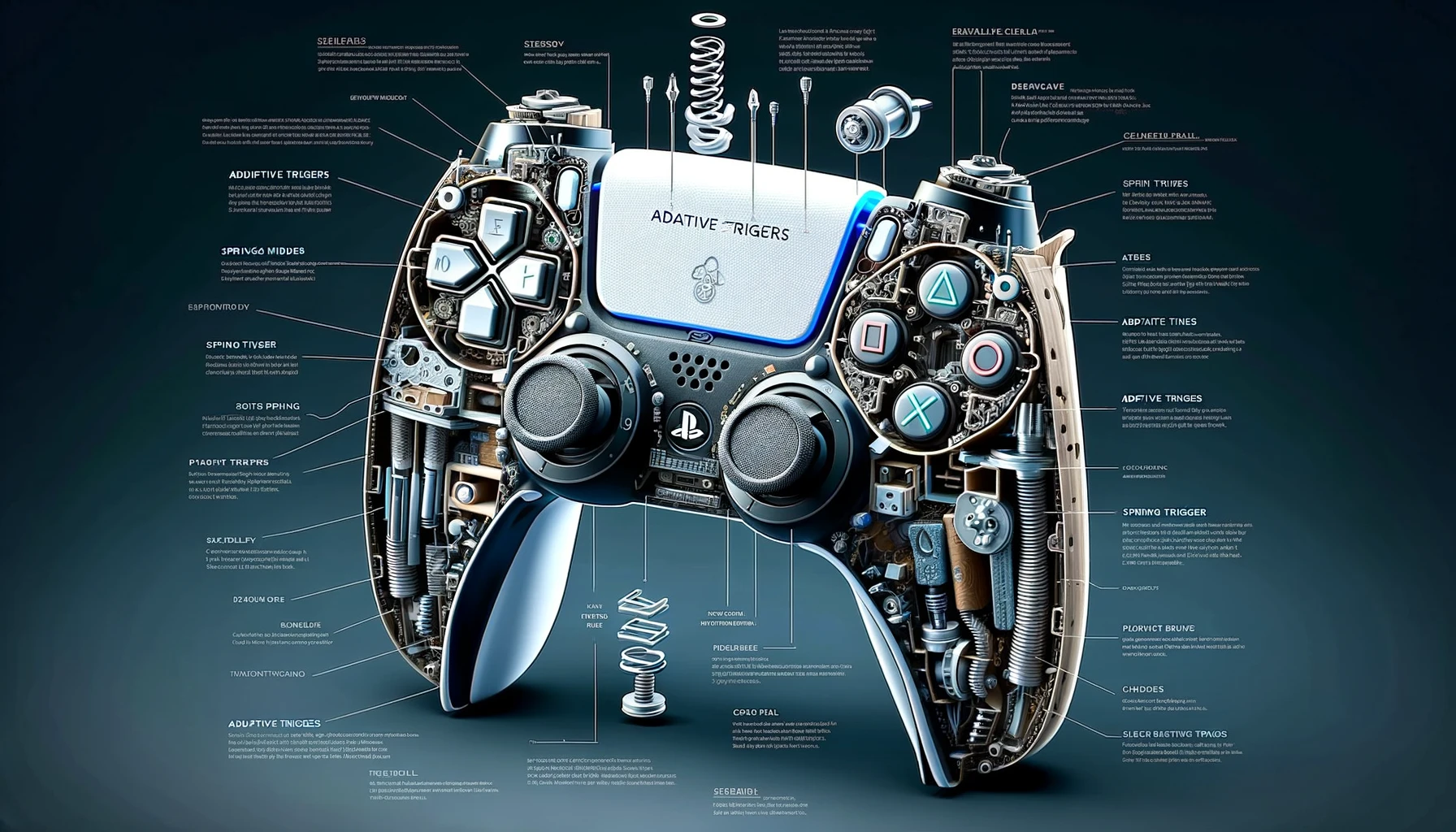The Evolution and Mechanics of Springs in the PS5 Controller: A Deep Dive
The Evolution and Mechanics of Springs in the PS5 Controller:
A Deep Dive
The PlayStation 5 (PS5) DualSense controller has revolutionized the way gamers interact with virtual environments, setting a new standard for user engagement in the gaming industry. This leap forward is significantly attributed to the controller's innovative use of torsion springs within its adaptive triggers and haptic feedback mechanisms. These features, designed to provide a more immersive and tactile gaming experience, have transformed mere button presses into nuanced interactions, mirroring real-world sensations. The introduction of such advanced technology necessitates a deep dive into the history, challenges, and solutions associated with these torsion spring mechanisms, offering valuable insights for a diverse audience including students, makers, manufacturers, inventors, and industry enthusiasts interested in the intricacies of modern gaming hardware.
Historical Context
The evolution of gaming controllers is a testament to the industry's relentless pursuit of more immersive and intuitive user experiences. From the simplistic designs of early consoles to the complex multifunctionality of modern devices, each generation has brought new challenges and innovations. The The torsional Springs within the PS5's DualSense controller are part of this evolutionary lineage, representing a significant technological leap. This transition wasn't merely about enhancing physical feedback but also about creating a more dynamic and responsive interface, where the actions in the digital realm elicit tangible, real-world sensations. Understanding this historical context sheds light on the significance of well designed and engineered springs in the PS5 controller, marking a pivotal moment in the ongoing evolution of gaming devices.


Adaptive Triggers and Spring Mechanism: In-depth Analysis
The adaptive spring triggers featured in the PS5 DualSense controller are a marvel of modern spring engineering, designed to provide gamers with a dynamic and immersive experience. The core of this innovation lies in the intricate torque spring mechanism that allows the triggers to simulate various levels of torque resistance. This technology enables the triggers to replicate real-world sensations by the torsion spring , such as the tension of drawing a bow or the resistance of driving a vehicle through rough terrain. The torsional spring mechanism's ability to adapt in real-time to the gamer's actions or in-game events presents unique challenges, including ensuring the system's responsiveness and durability. Engineers had to devise a mechanism that was not only sensitive to minute changes in tension, but also capable of withstanding hours of continuous, varied use without degradation. The solution involved a combination of high-quality materials that mate well together and last long periods of use. Precise spring engineering tolerances, and advanced spring software algorithms designed to calibrate and adjust the spring’s torsional torque accurately. This torsion spring design ensures that the triggers provide consistent, realistic feedback, enhancing the overall gaming experience and deepening the player's immersion in the game world.


Haptic Feedback and Springs: Technological Synergy
Haptic feedback in the PS5 DualSense controller represents a significant advancement in user interface design, offering tactile sensations that accurately mimic real-life experiences. The success of this feature relies heavily on the integration of springs within the controller's internal mechanisms. These springs are part of a complex system designed to produce vibrations and movements that players can feel in their hands, simulating various environmental and in-game factors. Achieving this level of realism was no small feat; it required the development of a finely tuned system where springs work in concert with voice coil actuators and sophisticated software. This system must precisely control the tension and release of force in the springs to generate the desired feedback, from the subtle tap of raindrops to the intense shock of an explosion. The design and implementation of these coil spring-based mechanisms posed significant challenges, particularly in terms of size, energy efficiency, and the ability to produce a wide range of haptic effects. However, the resulting feedback system has set a new standard for interactive experiences, allowing players to feel more connected to the digital worlds they explore.
Trigger Spring Replacement and Customization: Enhancing the Gaming Experience
Over time, the torque springs in the PS5 DualSense controller's adaptive triggers may require replacement due to normal wear and tear or to customize the gaming experience. Replacing these torsion springs is a detailed process that requires a careful approach to maintain the integrity and functionality of the controller. Gamers and technicians must disassemble the trigger assembly with precision, ensuring that all components, especially the delicate springs, are handled correctly to avoid damage. This maintenance is crucial for preserving the unique sensory feedback that the adaptive triggers provide. Furthermore, the customization of trigger springs opens new avenues for personalized gaming experiences. Gamers can alter the tension and feedback of the triggers to suit their preferences, potentially improving their performance and comfort during gameplay. This means the torsion springs have different levels of force which is called spring rate in: inch-lbs / per degree of travel. This level of customization underscores the PS5 DualSense controller's innovative design, allowing users to tailor their devices to their specific needs and play styles. The crux of the matter is: “When you redesign the torsion spring with weaker and stronger spring rates you get a different feel for the game” “This is where each player can get the feel of the trigger exactly how they want” Whether for maintenance or personalization, the ability to replace and customize the trigger springs is a significant aspect of the PS5 gaming ecosystem, reflecting the growing demand for a more personalized and immersive gaming experiences.


Conclusion and Future Perspectives
The springs within the PS5 DualSense controller are fundamental to delivering an unparalleled gaming experience, bridging the gap between virtual actions and tangible feedback. As we have explored, these components are crucial for the functionality of adaptive triggers and haptic feedback mechanisms, offering players a deeper level of immersion and interaction. The challenges and innovations discussed herein not only highlight the intricate nature of modern gaming technology but also set the stage for future advancements.
Looking ahead, the continuous enhancement of these spring mechanisms is essential for driving further innovations in gaming experiences. In this context, utilizing resources such as Acxess Spring's Spring Creator 5.0 for spring design, additionally with all its spring testing tools is a game-changer. These tools offer the precision and flexibility required to develop, test, and refine the next generation of springs that could be used in future gaming controllers. By leveraging Acxess Spring's expertise and technology, developers can experiment with different spring forces, materials, and spring designs to create more responsive, durable, and immersive spring mechanisms.
Embracing such advanced tools and resources not only accelerates the development process but also ensures that future gaming controllers continue to push the boundaries of interactive technology. As the gaming industry evolves, the collaboration between hardware engineers and innovative toolsets like those provided by Acxess Spring will be crucial in crafting the next wave of gaming innovations, ensuring that gamers continue to enjoy ever more realistic and engaging experiences.





